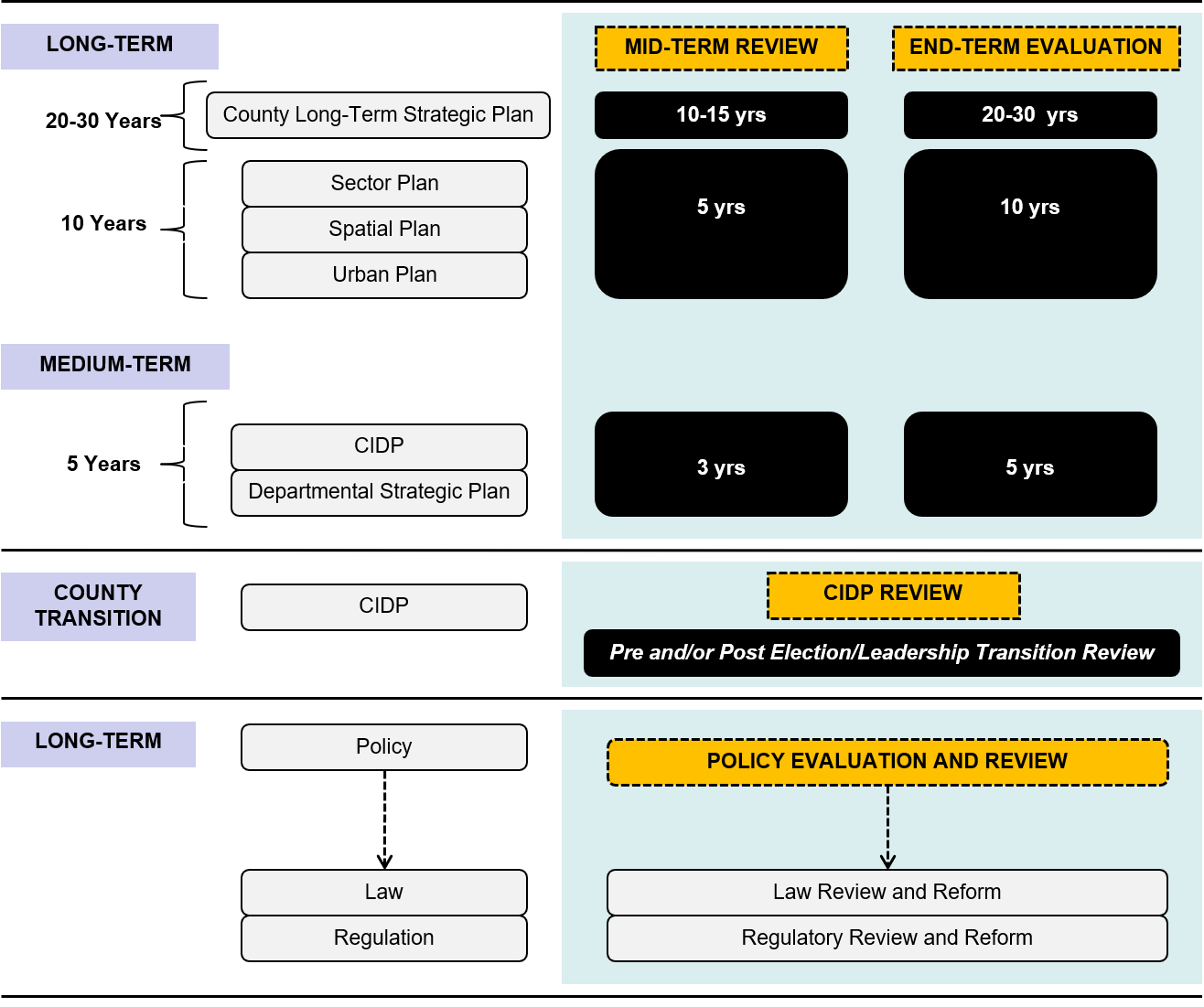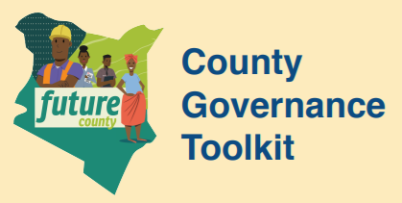These are the final steps of the Public Expenditure Management cycle, steps in which government looks back to the past to determine if public funds are spent responsibly and effectively, that is without waste and in a way that improves service delivery. The main purpose is to assess what has been done and how, to learn from experience and improve both government long-term strategies as well as day-to-day operations. Evaluations and reviews can be internal to the county government or done by external parties, with the most notable case being the annual independent audit conducted by the Office of the Auditor General.
| 1 |
The Office of the Auditor General conducts annual statutory audits of the county’s financial statements to determine if public funds were spent lawfully – in compliance with laws and regulations – and effectively. As part of its oversight function, the County Assembly (Public Accounts Committee) must ensure that the County Executive addresses the recommendations of the Audit Reports
|
| 2 |
Carried out at the mid-point of a county medium and long-term plans or projects, it captures progress towards targets and identifies areas requiring improvement or adjustment. Typically, a mid-term review (MTR) assesses plans and their implementation against criteria such as relevance, efficiency, effectiveness and potential for sustainability. The MTR may be carried out internally or, as is best practice, by an independent external party.
|
| 3 |
It is conducted after the completion of a project or plan, to assess its outputs and outcomes, distill lessons learned and build knowledge for the future. A comprehensive end-term evaluation applies criteria such as relevance, efficiency, effectiveness, impact and sustainability to both the design and implementation of the project/plan under review. It may be carried out internally or, as is best practice, by an independent external party.
|
| 4 |
The CIDP review is a highly participatory stakeholder review that happens during leadership transition between county administrations before or after elections. It forms an important part of the successor/forthcoming CIDP, and typically assesses results achieved against original or revised targets by sector, program and/or project. This assessment is documented in both financial (spending, investments) and non-financial progress (service delivery outcomes, project completion) terms with successes, challenges and lessons feeding into the successor CIDP.
|
| 5 |
Policy evaluation entails the review of both the design and implementation of a public policy. Also known as the process of “policy learning”, it enables county policy makers to learn what worked or did not work in the implementation, what contributed to policy success or failure, policy impacts, intended and unintended outcomes, key lessons learned and opportunities for policy improvement. A policy review examines these evaluation results to adjust the policy design and its means of implementation (regulatory measures and programmes).
|
Audit

Evaluate and Review

The County Executive usually initiates all evaluations and reviews, both those carried our internally and those done by external parties. The main role is to proactively make available all the information needed by those conducting the study and, once the evaluations are completed, implement their recommendations. In the case of statutory and special audits conducted by the Office of the Auditor General (OAG), the County Finance and Economic Planning acts as the key point of liaison for the OAG and is also responsible for ensuring a coordinated approach to responses to queries by the County Assembly, and implementation of audit recommendations. Finally, the County Executive is expected to make all evaluations, reviews, and audit reports available to the general public.
As a key component of their oversight function, County Assemblies receive, analise and deliberate on all evaluations, reviews and audit reports. Their deliberations carry weight and should be considered by the County Executive in the formulation of future policies, plans and budgets. In the case of OAG audits, the Public Accounts and Investment Committee (PAIC) is actively engaged in ensuring that the County Assembly receives and deliberates on audit reports received, consults with the County Executive on clarifications, and works closely with the Auditor General to develop actionable recommendations for follow up. Ad-hoc sectoral or departmental committee representation may be involved in the deliberation of special audit reports.
The citizen contributes views and experiences during evaluations and reviews, supports dissemination of evaluation and review findings and actively ensures future policy and planning is informed by lessons learned. Evaluations, reviews and audit reports are very valuable inputs for any social accountability activity.
- Auditor-General uses the annual financial statement as the basis for the annual financial and compliance audit. Annual non-financial (progress) reports may provide useful input to performance and other special audits.
- Sector Working Groups (SWGs) allow constant interaction between technical departments and sector stakeholders during evaluation and review processes
- City or Municipal Boards lead evaluations and reviews of City or Municipal Plans, working in conjunction with the host County Government (Executive and Assembly)
- County Budget and Economic Forum (CBEF) facilitates high-level discussions on the findings and lessons emerging from evaluations, reviews and audits
- County Commissioner offices and National Government agencies (such as the Monitoring and Evaluation Directorate in the State Department of Planning) promote and support and promote inclusive and constructive communication, cooperation, coordination and collaboration during evaluations and reviews
